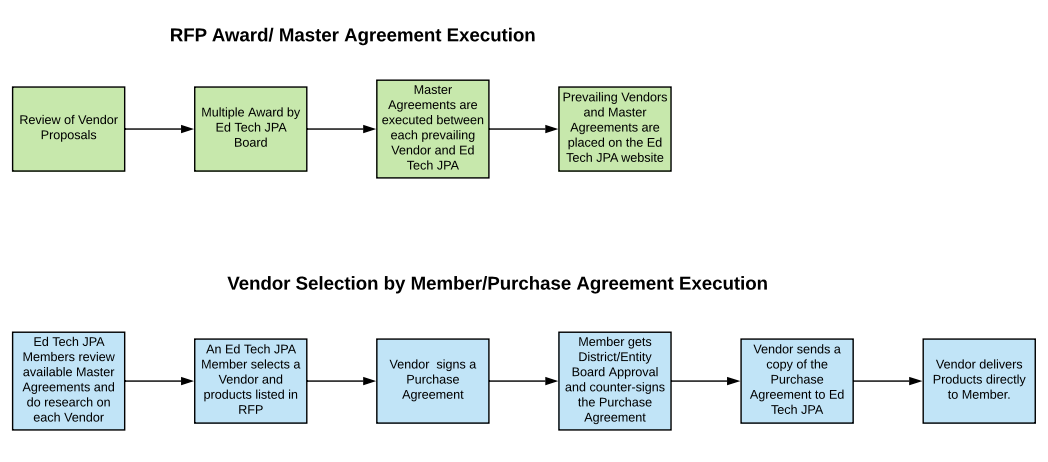A. Introduction and Definition of a JPA
A Joint Powers Agency ("JPA") is a limited-purpose government agency formed by an agreement between two or more government agencies. JPAs have a long history in California, and have been allowed since 1949. Many school districts are members of insurance and transportation JPAs. EdTech JPA endeavors to streamline procurement for digital products and services.
B. The purpose of Ed Tech JPA
School districts, county offices of education and vendors often separately negotiate contract terms, pricing, and data privacy agreements for digital education products and services. This piecemeal approach results in educational agencies and vendors spending time and resources, drafting and responding to lengthy bid documents, negotiating individual contract terms, and incurring additional legal expenses in vetting vendors' data use policies to ensure the protection of student privacy. Ed Tech JPA provides all California educational agencies with the opportunity to leverage consortium contracts to save time and resources, while insuring data privacy and public procurement laws are followed.
The main purpose of Ed Tech JPA is to negotiate competitively priced digital technology contracts. Using the California procurement process, Ed Tech JPA will award master agreements through a Request for Proposal (“RFP”) to several highly qualified vendors in each category of services. Ed Tech JPA will further require all vendors who receive student data to adopt the California Student Data Privacy Agreement (“CSDPA”) to ensure compliance with all state and federal student data privacy laws. Currently any public school district in California has the opportunity to become an Associate Member of the JPA and access the digital products at the JPA negotiated prices.
C. Benefits to School Districts from the JPA
1. Procurement Savings: Ed Tech JPA centralizes the technology procurement process, including the preparation of RFPs, vendor selection process, and contract negotiations. A centralized procurement process saves member agencies procurement costs that they would normally bear separately in individualized transactions.
2. Price Savings: Because of the number of students and districts involved, the JPA seeks to obtain products and services at an economical cost, thereby creating additional savings for member Districts.
3. Privacy and Security: All vendors are required to sign the California Student Data Privacy Agreement (CSDPA), which provides comprehensive data privacy and security protections for student data. While we are perhaps approaching a tipping point, this requirement has intrinsic value to all school districts because there is still considerable resistance by vendors in agreeing to proper privacy protections in their dealings with individual districts.
D. Benefits to Vendors from the JPA
1. Procurement Savings: Vendors will respond to one RFP which multiple school districts will be able to review and utilize. Vendors have less need to draft lengthy, individual proposals. Instead educational agencies can work directly with Vendors to identify the best-fit product to meet their needs and move forward with an expedited purchase and implementation process. Educational agencies' ability to leverage a Master Agreement, without additional RFP or purchasing requirements will broaden Vendors' potential customer pool and reduce the time and resources required secure sales.
2. Standard Pricing and Security: Vendors will set pricing in Proposals, and sign a Master Agreement that all Districts may leverage to purchase products and services. In establishing uniform pricing and contract terms, Vendors will set a standard that can easily be referred to all clients.
3. Privacy and Security: By signing the California Student Data Privacy Agreement Vendors (including Exhibit E - General Offer of Terms), Vendors can be confident that their agreements will meet educational agencies privacy requirements. By executing one agreement that all California educational agencies can leverage, Vendors may save time and resources in establishing individual data privacy agreements to meet the unique needs of each separate agency.
